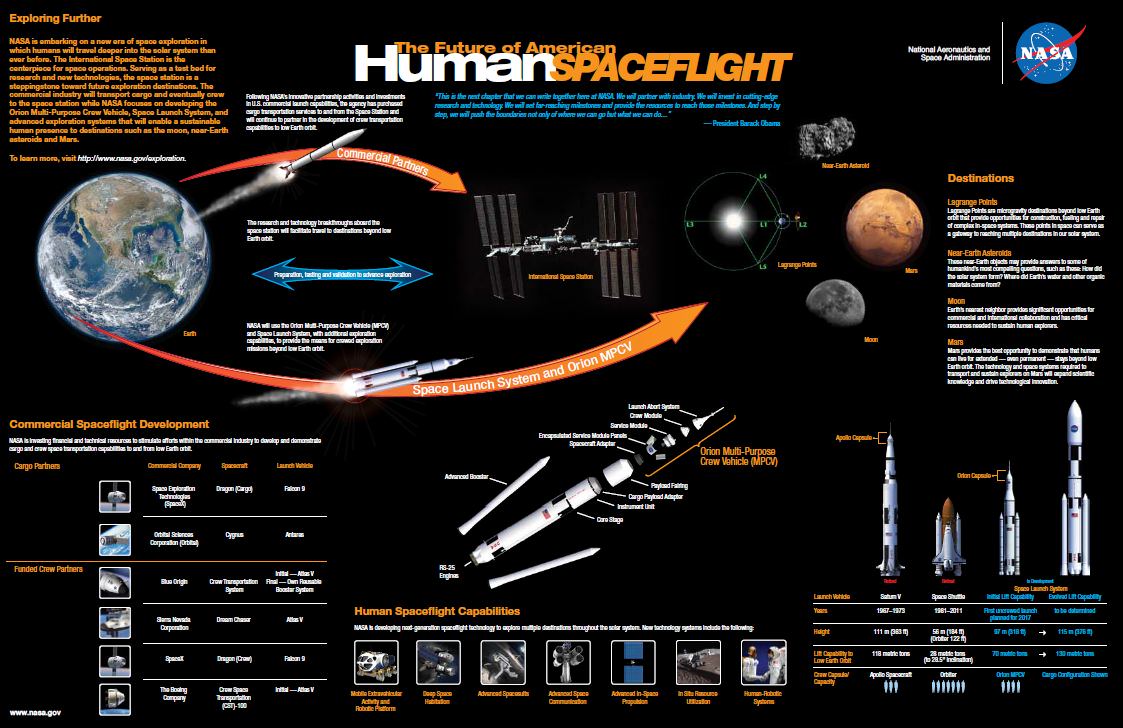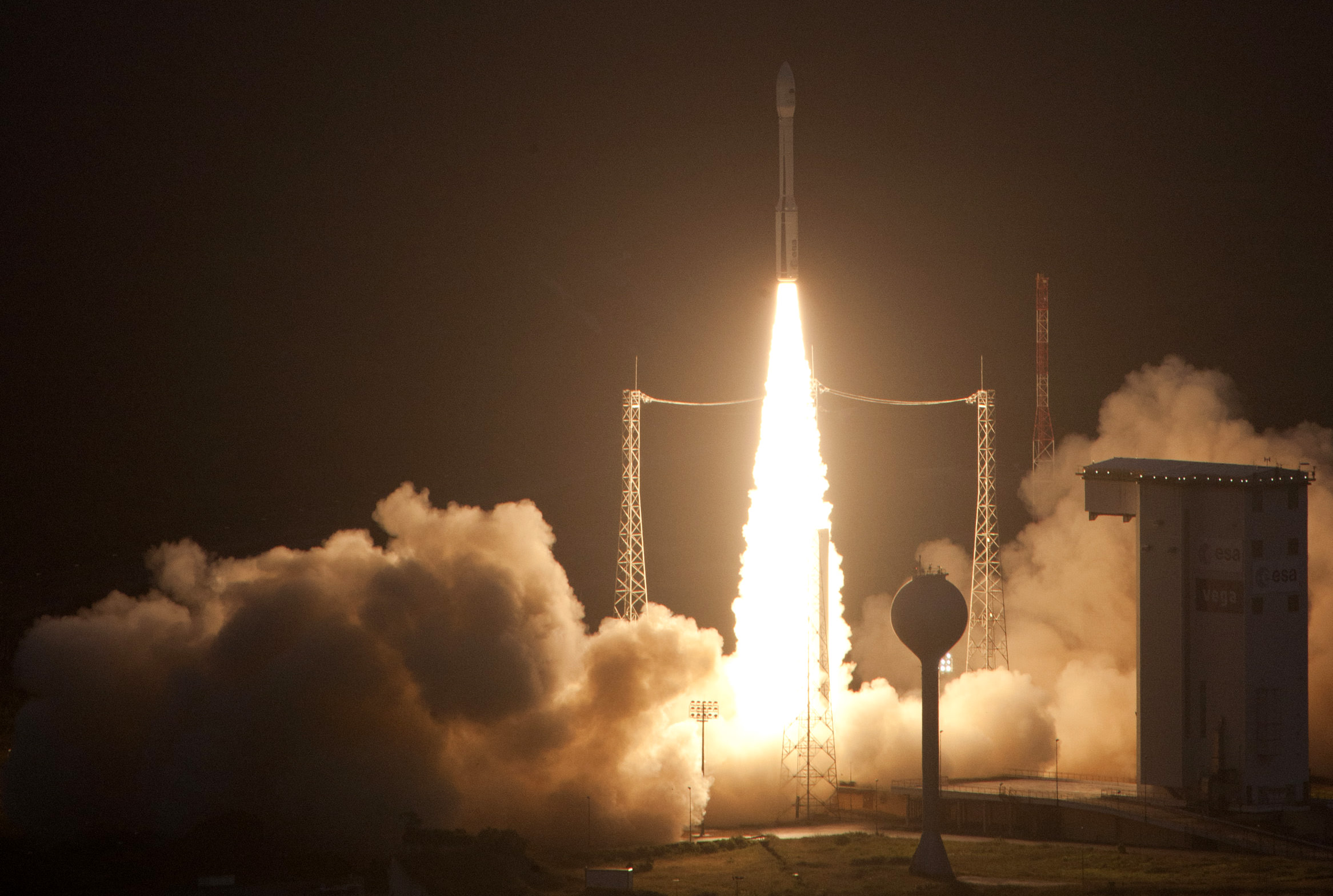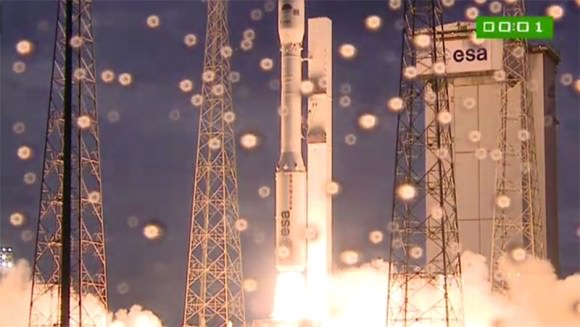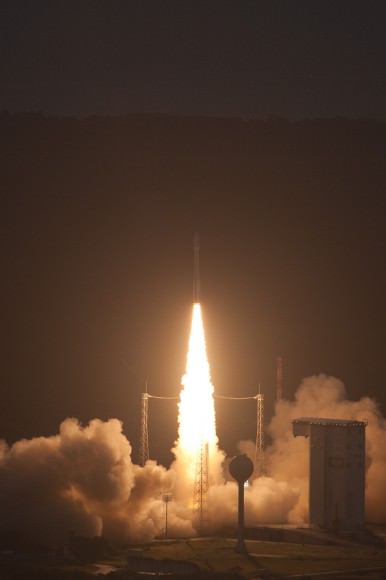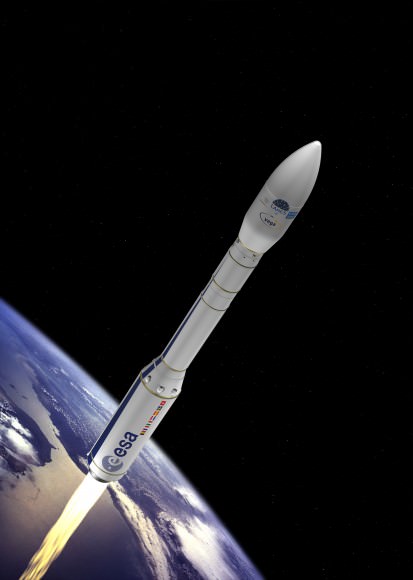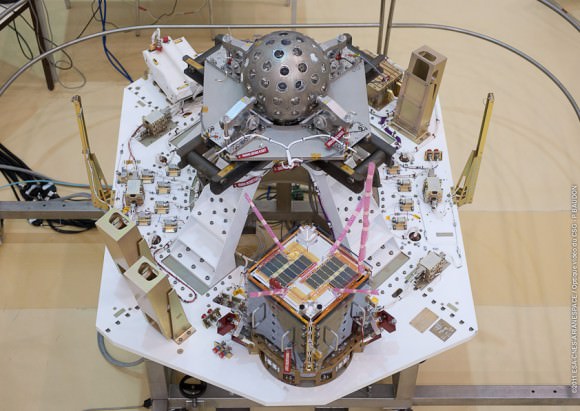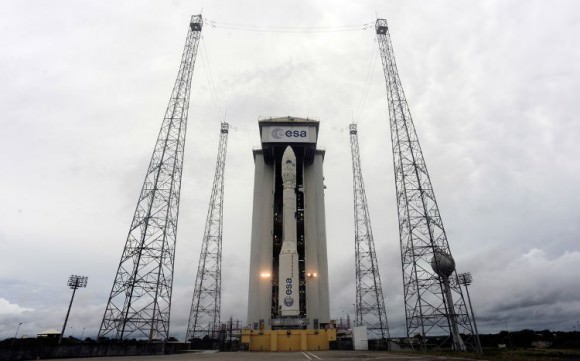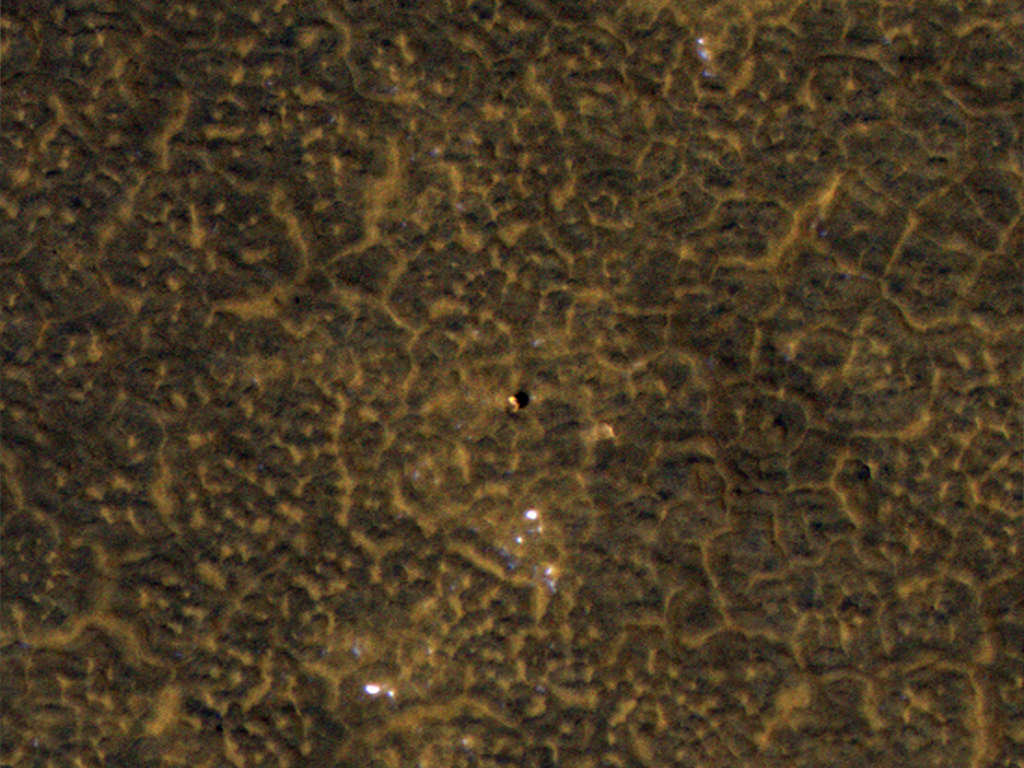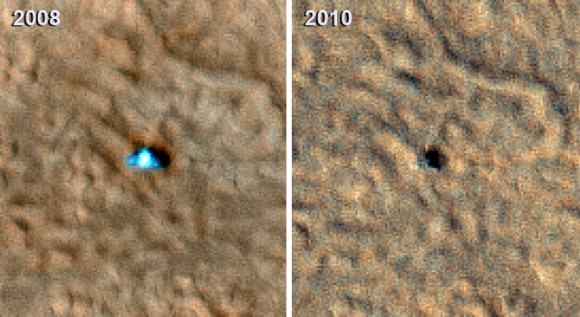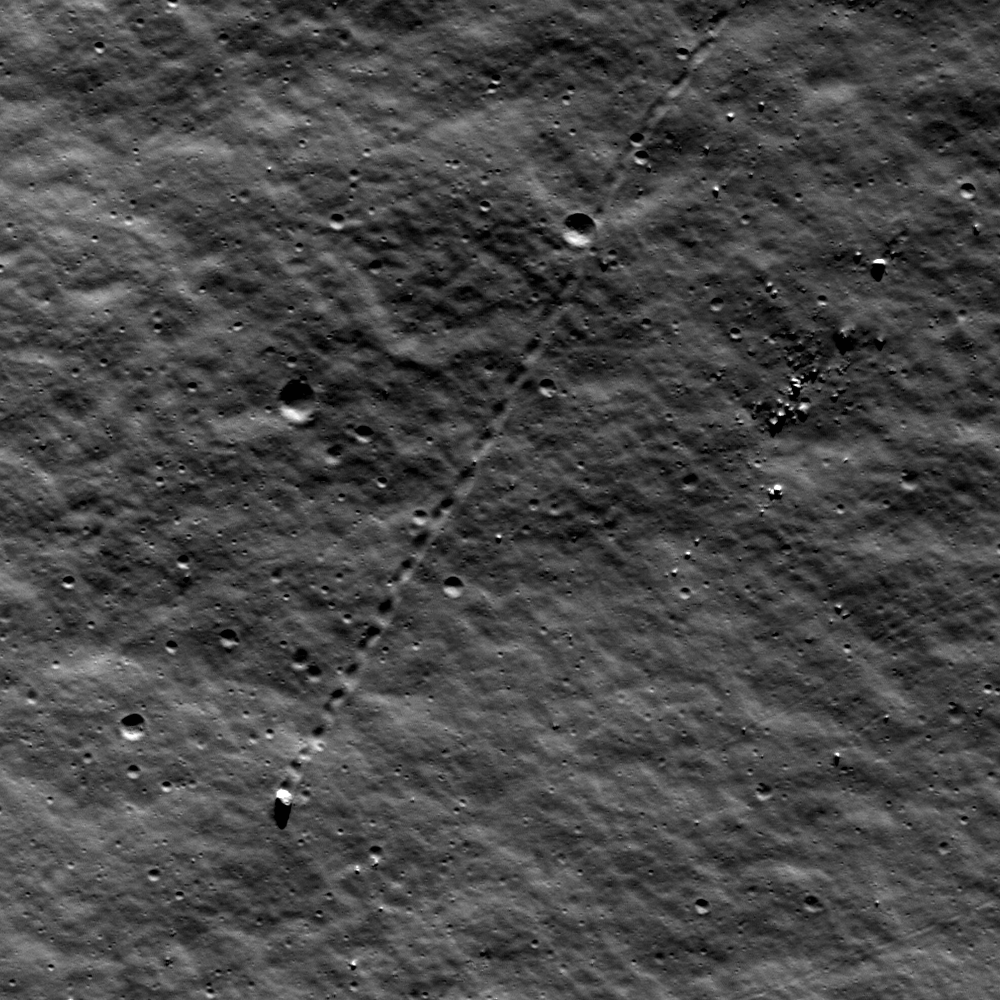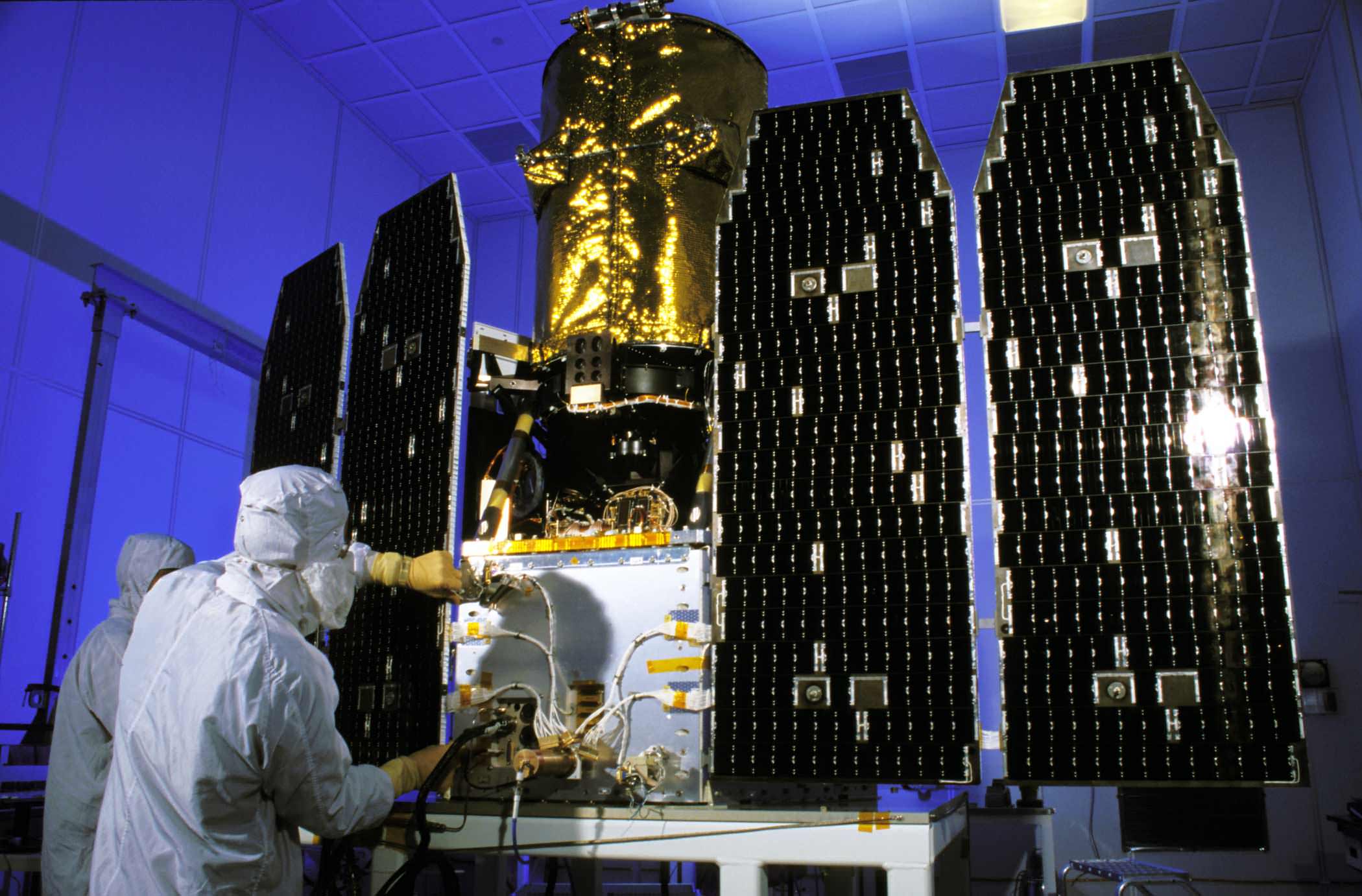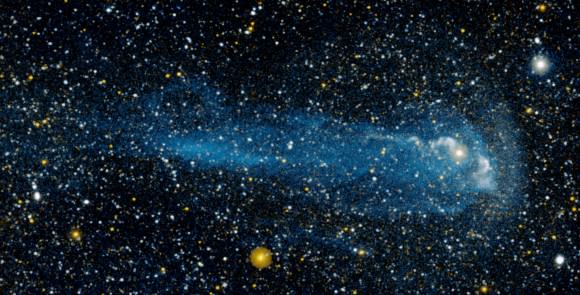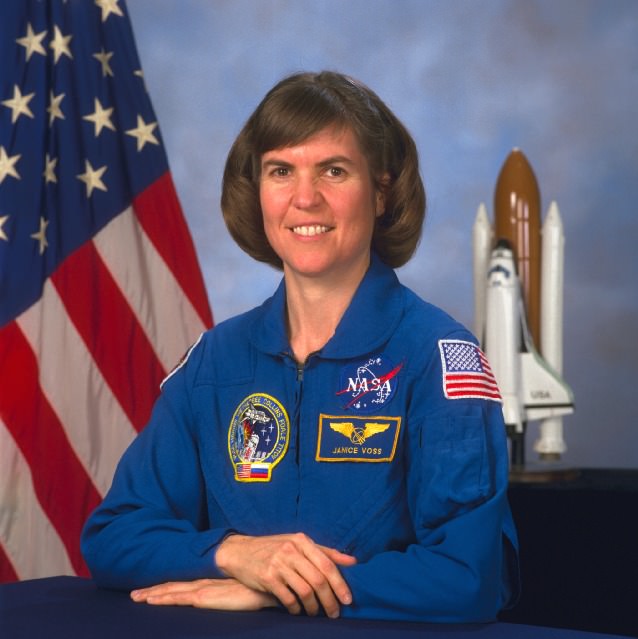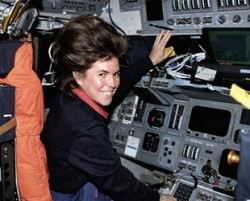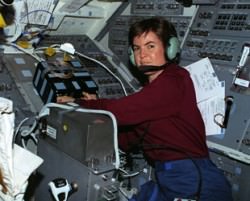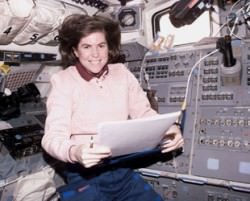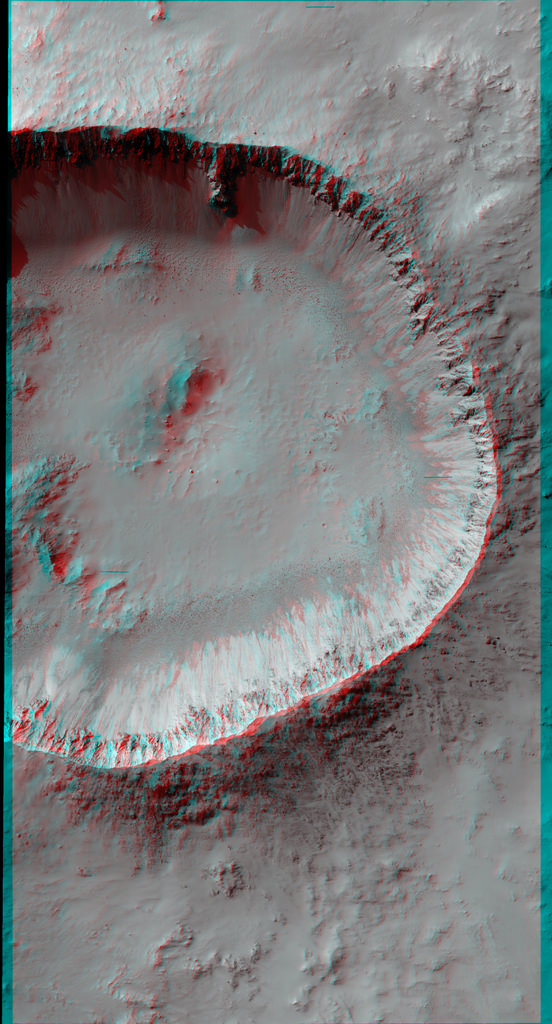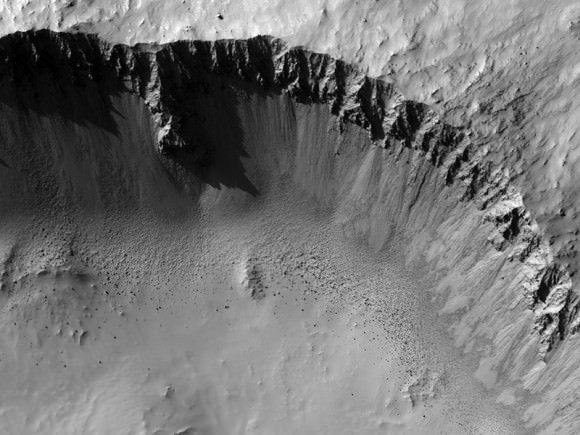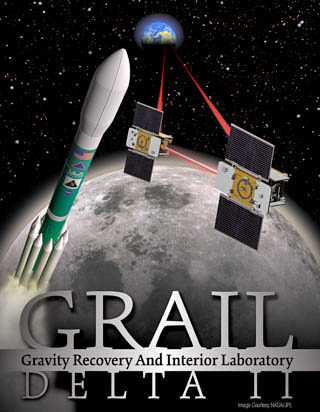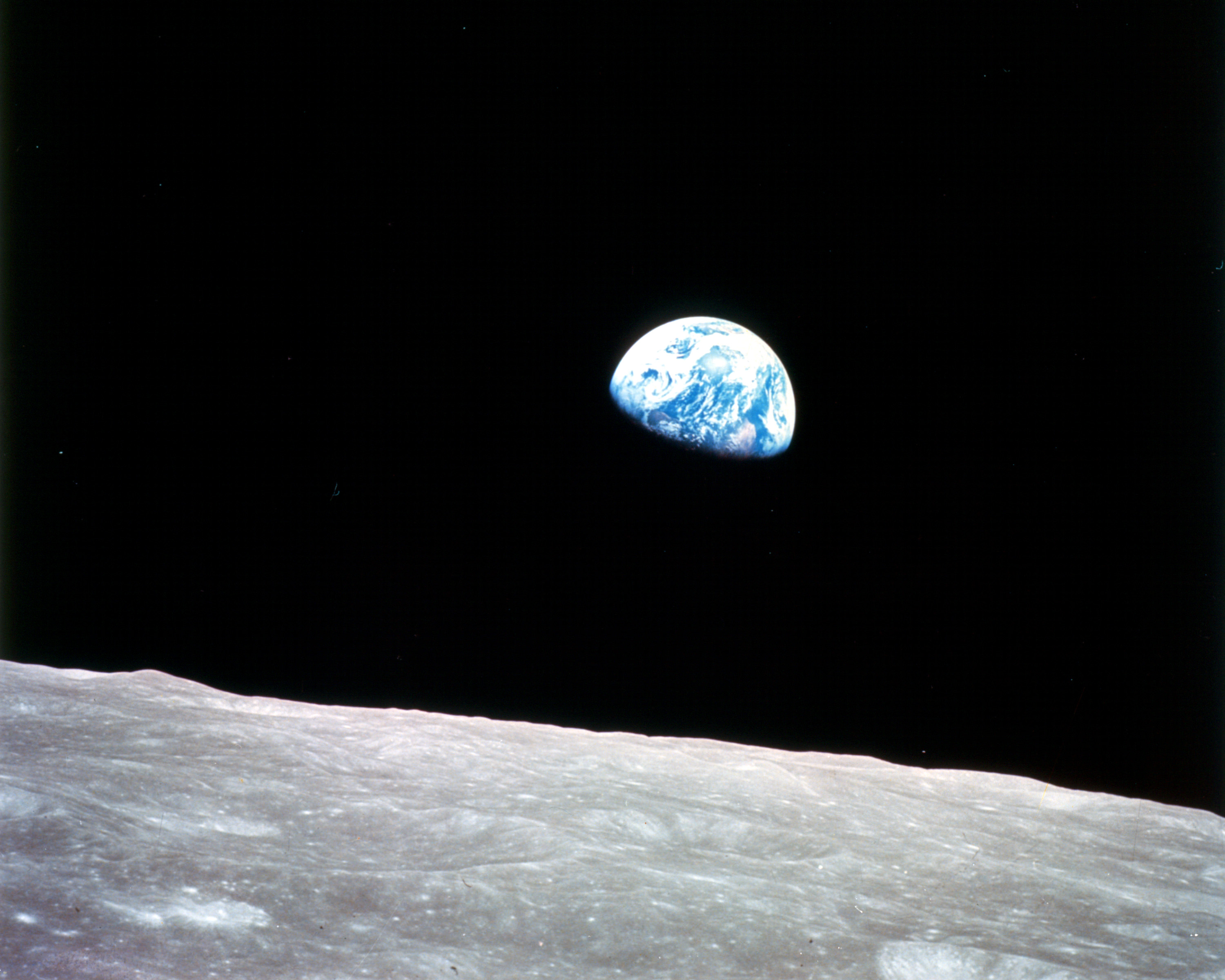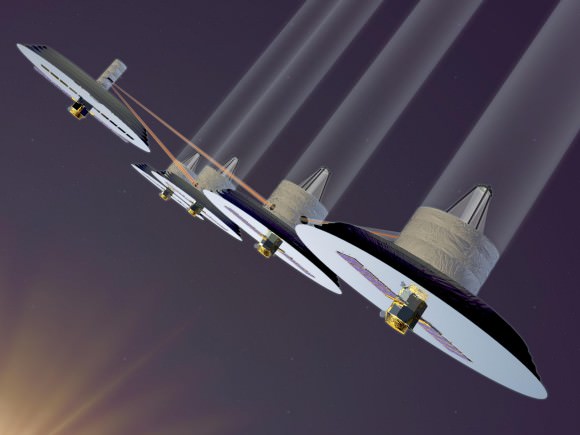[/caption]
NASA released a new interactive infographic that attempts to give a picture of future of human spaceflight activities and where NASA might be going. The new Space Launch system and the Orion MPCV figure prominently in going to future destinations such as the Moon, Mars, Near Earth Asteroids and even LaGrange Points. It would be awesome to go to all those destinations, but – call me pessimistic — in reality, we’ll be lucky if we even get to one of them in the next 30 years. But since human spaceflight received favorable funding nods in the new NASA budget proposal, we can hopefully look forward to the first un-crewed test flight of the MPCV in 2013 or 2014.
In the interactive feature you can learn about the SLS and MPCV, along with spacesuits, deep space habitation and communications and more. Additionally, there are interviews with astronauts Sandy Magnus, Harrison Schmitt, and Tom Jones, along with NASA officials Doug Cooke and Waleed Abdalati.
As far as the various destinations, Schmitt says we should return to the Moon as the Apollo missions “barely scratched the surface,” and “the Moon is a history book of what went on in near Earth space and of what went on in the early solar system. The real geoscience value of the Moon is to learn about ourselves.”
Jones says asteroids will also provide scientific information about the early days of the solar system, as well as providing information about space resources such as water. We can also learn about how to protect our planet. “These objects will run into us in the future, as they have done in the past. For us to survive in the long run we’re going to have to learn to operate around and prevent a future collision by applying our space technology to the alteration to the orbits of some of these hazardous objects.”
Journalist Leonard David wrote an article this week about a recent NASA memo that talks about the potential for NASA building a waystation at one of the Earth-Moon libration points. Also, a working group of International Space Station members is being held in Paris this week, and David says this strategy is likely being discussed with international partners. It certainly sounds exciting, but may be perhaps the most expensive destination, as every resource would have to be brought there to build a station, instead of landing on a destination like the Moon or an asteroid and using the potential resources there.
Can NASA be successful in the “multiple path” plan or will they ultimately need to pick just one?

